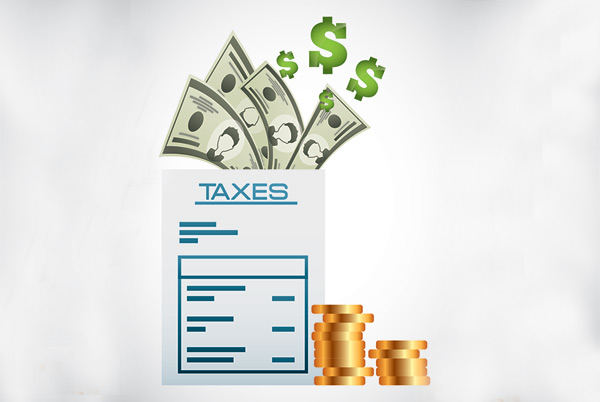
Tax Deductions for Gluten Free Groceries: Are they worth the effort?
Yes, it’s that particularly dreaded time of year again, folks: tax season!
I am not a certified tax consultant, I am just a normal taxpayer, which has prompted me to research the question about whether or not gluten-free taxpayers can or should take a tax deduction for their gluten-free groceries.
In the 11 years since our own son was diagnosed with celiac, we’ve never taken any sort of tax deduction for the massive amount of gluten-free food we buy. Initially, it seemed like a lot of work for questionable benefit. After all, you need to keep close track of the cost difference between the gluten-free items you buy and similar non-GF items. (It is this difference , not the full price, of gluten-free foods that you can deduct.) Instead, I chose to spend my time learning about the gluten-free diet and preparing healthy meals. I later learned about another hurdle, aside from the time and effort in tracking and bookkeeping – a hurdle that can be a deal breaker for many people.
The cost of gluten-free food can be considered a “medical expense.” According to Section 213 of the IRS Code, that means you can only deduct the amount that exceeds 10 percent of your Adjusted Gross Income, or AGI. (If you are 65 or older, there is a provision effective through 2016 that stipulates a 7.5 percent AGI threshold.) In either case, the higher your AGI, the harder it will be for you to deduct these “medical expenses.”
Let’s assume, for example, that a taxpayer has an AGI of $70,000. That means he or she would need to have out-of-pocket medical expenses that exceed $7,000 (or $5,250 if over age 65) in order to deduct any gluten-free expenses.
As you can imagine, taxpayers that might benefit from the gluten-free deductions are those whose income is more modest and who spend a significant amount on gluten-free food, perhaps because multiple family members require a gluten-free diet. Another way to qualify for this deduction would be if you had other significant out-of-pocket medical expenses. (Your portion of your insurance premiums and any medical, dental, or vision expenses not covered by insurance qualify, as do chiropractor visits, doctor prescribed nutritional supplements, and acupuncture.) But even accounting for all these possibilities, it’s often only taxpayers like retirees with a relatively low taxable income and uncovered medical expenses due to a significant illness that might hit this threshold.
Even if you do qualify, it’s only the amount that exceeds the 10 percent (or 7.5 percent) figure that is deductible. So in our example, if a taxpayer did indeed have out-ofpocket medical expenses (including the incremental cost of buying gluten-free products) that surpassed their $7,000 threshold (let’s say the expenses totaled $8,000), only $1,000 would be deductible. At a 20 percent tax rate, that’s $200 in tax savings.
All this aside, it’s worth running some quick numbers to see if it makes sense for you to hold on to those grocery receipts and track your gluten-free spending. After all, if you’re like me, you probably feel like you spend a ton of money on gluten-free food!
When I estimated how many of the large loaves of Udi’s bread we purchased over the course of a year at $7.99, compared to the Pepperidge Farm Farmhouse bread at $3.99 per loaf that we buy for our older, non-celiac son – I thought it might add up. If we’re spending an extra $4 on bread about every 10 days to send our son to school with a gluten-free sandwich, that’s an extra $146.00 per year just on this one staple!
For the purpose of this article I figured I’d do a little research comparing prices of our favorite gluten-free staples to comparable non-GF foods. Of course, I typically shop at many different markets to buy all of our family’s favorite gluten-free brands, since no one store seems to sell everything we like. For my research, I visited my local grocery store, which now carries a surprising number of gluten-free products. Even if our own family were to purchase all of our gluten-free items every week, it would cost our family only about $2,500 extra per year to purchase gluten-free “essentials” versus similar non-GF products. That amount wouldn’t put us over our own AGI threshold, unless we had many other out-of-pocket medical expenses for a given year.
Of course, you will have to consult your tax advisor, who will be able to make the final determination about whether or not this deduction makes sense for you, based on your own individual situation.
Medical deductions are taken on 1040 Schedule A. Whether or not keeping track of these expenses is worth your time depends on your own situation regarding income and other non-covered, deductible medical expenses. I strongly suggest consulting with your own tax advisor for guidance. And keep in mind, you also need to have a medical diagnosis that makes a gluten-free diet necessary (celiac disease or gluten sensitivity). You will need a doctor’s “prescription” or note stating this. People choosing to purchase gluten-free food for other reasons cannot take a deduction.
If you don’t qualify for this deduction, one other alternative to investigate is the possibility of getting reimbursed for your additional gluten-free food expenses through a Flexible Spending Account (FSA) or Health Savings Account (HSA) tied to a high-deductible health insurance plan. There are limits to how much can be contributed to both of these types of accounts, so again, this is something you should discuss with your tax advisor.
If you think you may qualify for the deduction, you will need to keep ALL receipts and document the cost differences. Keep these, along with the prescription from your doctor, in case you are audited. I’d recommend entering the purchases (and cost differences) into a simple spreadsheet each month so you’re not left with a huge stack of receipts to go through come tax season. Getting through that with your sanity intact would probably require a tall glass of (gluten-free) beer or wine!
 ABOUT THE AUTHOR: Karen Broussard publishes glutenfreetravelsite.com and the free DINE GLUTEN FREE mobile app. Both contain thousands of GF dining and travel reviews from around the world. Karen is also the publisher of the Gluten Free Travel Blog (glutenfreetravelblog.typepad.com) and two e-books available on Amazon: Gluten-Free in London and Gluten-Free in Italy.
ABOUT THE AUTHOR: Karen Broussard publishes glutenfreetravelsite.com and the free DINE GLUTEN FREE mobile app. Both contain thousands of GF dining and travel reviews from around the world. Karen is also the publisher of the Gluten Free Travel Blog (glutenfreetravelblog.typepad.com) and two e-books available on Amazon: Gluten-Free in London and Gluten-Free in Italy.



